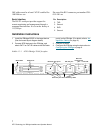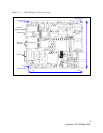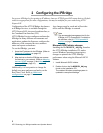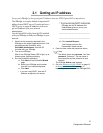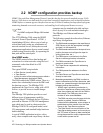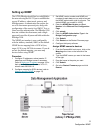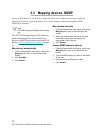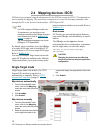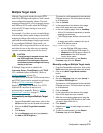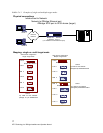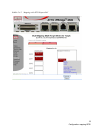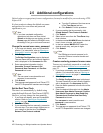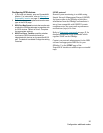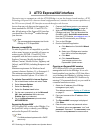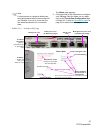
15
ATTO Technology Inc. iPBridge Installation and Operation Manual
2.4 Mapping devices: iSCSI
SCSI devices are mapped using the designations for the SCSI bus, target and LUN. CLI commands are
used to modify the mapping. The easiest way to map devices is to use the Automap command, either
through the CLI or the browser-based interface, ATTO ExpressNAV.
Note
For iSCSI-configured iPBridge models only.
To map devices, you must have a host
computer connected to the iPBridge serial port
or an Ethernet port. Refer to
Getting an IP
address
on page 10.
The recommended management tool for the
iPBridge is ATTO ExpressNAV.
By default, a host or initiator views the iPBridge
as a single iSCSI node with all available SCSI
devices shown as LUNs on a single iSCSI target.
Refer to
Exhibit 2.4-1
You may use Multiple Target mode to break the
single iSCSI node into multiple nodes. Multiple
Target mode allows you to grant or deny access
between initiators and devices as needed. Refer to
Exhibit 2.4-1
Node names
iSCSI nodes are accessed through the Ethernet
ports on an iPBridge, each identified by its own IP
address.
The iPBridge uses the
iqn
name format,
referencing the device serial number, to guarantee
that the target name is world-wide unique:
iqn.1995-12.com.attotech:ipbridge:
serialnumber
CAUTIONCAUTION
Changing the device map can affect the
host’s view of devices and your application
configuration.
Single Target mode
Single Target mode is the default. Use ATTO
ExpressNAV interface to map devices
automatically or manually. Refer to
ATTO
ExpressNAV interface
on page 21.
Map devices automatically
1 From the ExpressNAV main
menu, click on the Mapping
menu item on the left side of the
screen.
2 Click AutoMap
3 Click Submit
Map devices manually
1 From the ExpressNAV main
menu, click on the Mapping
menu item on the left side of the
screen.
2 Select the devices from the box
on the right hand side of the
screen and drag to the appropriate LUN on the
left.
3 Click Submit.



